




Coal Miner Finds Mammoth Tusk
Pages 8-9
Pages 12-13
Who: Bon Homme Yankton Electric Members
What: 2024 Bon Homme Yankton Electric Annual Meeting
When: Tuesday, August 20th, 5:30-7:30 PM
Where: Lidice Street (main street) Tabor
Each membership that registers will receive an attendance gift, a $20 meal certificate to their choice of The Keg in Tabor, Joe’s Substation in Lesterville, or The Marina Grill in Yankton. All registered members will also be entered for a chance to win one of five $100 bill credits. Watch our Facebook page, facebook.com/BonHommeYanktonElectric for Call to Order, Adjournment of Meeting, and the Bill Credit Drawing.
Watch your mail in August for your Annual Meeting postcard! Don’t forget to bring it to the meeting for fast and easy registration!
Reminder Voting Delegate for an Organization must be done 24 hours before the Annual Meeting.
Bon Homme Yankton Electric Association, Inc.
Official Notice of
Notice is hereby given that the 2023 Bon Homme Yankton Electric Association, Inc. Annual Meeting of Members will be held on Tuesday, the 20th of August, 2024 from 5:30 PM to 7:30 PM at 134 S. Lidice Street in Tabor, SD to conduct official business of the cooperative that includes the secretary business, financial report, and director elections in District 3 and District 5.
Petitioners filing for election are: District 3 - David Sykora District 5 - Brian Brandt
Respectfully submitted, Dave Sternhagen, Secretary
(USPS No. 018-973)
Bon Homme Yankton Electric Association, Inc PO Box 158 134 S. Lidice St. Tabor, SD 57063
Office Hours: Monday through Friday 7:30am - 4:00pm
To pay by phone, call: 1-888-395-5315
To report an outage, call: Local call from Tabor, Tyndall, and Yankton: 605-463-2507
NOTICE: Electric bills must be paid by 10:00am on the 20th of each month to avoid a $10 late fee.
Board President: Paul Voigt Board of Directors
Dave Sykora - Vice President
Dave Sternhagen - Secretary
Robert Ruppelt - Treasurer
Dean Sternhagen
John Lillevold
Rick Cheloha
General Manager: Stephanie Horst
Operations Manager: Ken Carda Office Manager: Nicole Einrem
Members Service Advisor: Aaron Melichar
Editor: Chantelle Jungemann
Bon Homme Yankton Electric Cooperative Connections is the monthly publication for the members of Bon Homme Yankton Electric Association, Inc, PO Box 158, 134 S. Lidice St., Tabor, SD 57063-0158. Families subscribe to Cooperative Connections as part of their electric cooperative membership. The purpose of Bon Homme Yankton Electric Cooperative Connections is to provide reliable, helpful information to electric cooperative members on electric cooperative matters and better rural living. Subscription information: Cooperative members devote 50 cents from their monthly electric payments for a subscription. Non-member subscriptions are available for $12 annually. Periodicals postage paid at Tabor, SD 57063.
Postmaster: Please send address changes to Bon Homme Yankton Electric Cooperative Connections, PO Box 158, Tabor, SD 57063; telephone (605) 463-2507. Tabor, SD 57063; telephone (605) 463-2507. This institution is an equal opportunity provider and employer.

The June board meeting was held on June 21, at 8:01 am. All board members were present except Rick Cheloha. Others present were the management staff, guest employee and Brian Brandt District 5 director petitioner.
THE BOARD APPROVED THE CONSENT AGENDA:
• May 2024 Board Meeting minutes
• Capital Credits to Estates Discounted Payment total - $7,094.49
• New Members & Cancellations Review
• Closed Work Order Inventory - #912 for $120,246.46
• Review Special Equipment Purchases -None
THE BOARD REVIEWED AND ACCEPTED:
• Member Service Report
• Operations & Safety Report -work plan amendment #3 review
• Office & Financial Reports
• General Manager Report
• East River Cyber Security/IT Report
• SDREA Board
• East River Board
• Approved Construction Work Plan Amendment #3 estimated of $1.5 M.
• Approve Advancing of Beseda Hall REED Loan Application.
• Appointed East River Annual Meeting Voting Delegate/Alternate (Cheloha/ Sykora)
• Approved Policy 50-07 Street-Security Lighting revisions.
• Horst designated RESCO as voting delegate.
• No Executive Session
• Next Meeting date set for Tuesday July 23, 2024, at 8:00 am.
ANNUAL
You need to drink enough water to prevent heat illness. An average person needs to drink about 3/4 of a gallon of water daily. Everyone’s needs may vary.
• You can check that you are getting enough water by noting your urine color. Dark yellow may indicate you are not drinking enough.
• Avoid sugary, caffeinated and alcoholic drinks.
• If you are sweating a lot, combine water with snacks or a sports drink to replace the salt and minerals you lose in sweat.
• Talk to your doctor about how to prepare if you have a medical condition or are taking medicines.
Do not rely only on electric fans during extreme heat. When temperatures are in the high 90s, fans may not prevent heat-related illness. Taking a cool shower or bath or moving to an air-conditioned place is a much better way to cool off.
• Spending a few hours each day in air conditioning can help prevent heat illness.
- If you have air conditioning, be sure that it is in working order.
- If you do not have air conditioning or if there is a power outage, find locations where you can stay cool. For example, a public library, shopping mall or a public cooling center. Plan how you will get there.
- Additional resources may be available from local government or community groups.
• Make sure you have plenty of lightweight, loose clothing to wear.
• Create a support team of people you may assist and who can assist you. Check in with them often to make sure that everyone is safe.
• Learn how to recognize and respond to heat illness.
• Learn First Aid and CPR.
• Be ready to live without power. Utilities may be offline. Be ready to live without power, gas and water. Plan for your electrical needs, including cell phones and medical equipment. Talk to your doctor. Plan for backup power Gather Emergency Supplies
• Gather food, water and medicine. Stores might be closed. Organize supplies into a Go-Kit and a Stay-at-Home
Kit. In the event of a power outage, you may lose access to clean drinking water. Set aside at least one gallon of drinking water per person per day. Consider adding drinks with electrolytes. Include sunscreen and widebrimmed hats.
• Go-Kit: at least three days of supplies that you can carry with you. Include backup batteries and chargers for your devices (cell phone, CPAP, wheelchair, etc.)
• Stay-at-Home Kit: at least two weeks of supplies.
• Have a one-month supply of medication in a child-proof container and medical supplies or equipment.
• Keep personal, financial and medical records safe and easy to access (hard copies or securely backed up)
• Consider keeping a list of your medications and dosages on a small card to carry with you.
Source: American Red Cross

“Call 911 and Don’t Get Out”
Hobie Klein warns farmers to call 911 and don’t get out of the tractor if contact is made with a power line. Hobie’s parents are Dean and Karey Klein, members of Sioux Valley Energy.
Kids, send your drawing with an electrical safety tip to your local electric cooperative (address found on Page 3). If your poster is published, you’ll receive a prize. All entries must include your name, age, mailing address and the names of your parents. Colored drawings are encouraged.

MOM’S VEGETABLE
SALAD
Ingredients:
Salad
2 cans diced carrots
1 can green beans
1 can yellow beans
1 small can peas
1 can cut baby corn
Drain all the vegetables
Add
1/2 cup diced green pepper
1 cup diced celery
1 diced medium onion
Dressing
Combine in a saucepan
1/2 cup oil
1 1/3 cup sugar
1/3 cup white vinegar
1/3 cup cider vinegar
2 Tbsp water
Combine in a saucepan and boil until clear
Method
Pour dressing over vegetables and refrigerate for several hours before serving. Keeps for a week.
Debra Clow Harrisburg, S.D.
SALAD
Ingredients:
3 tbsps. olive oil, divided
1 tbsp. lime juice
1/4 tsp. salt
1 1/5 cups fresh corn or thawed frozen corn
1 1/2 cups cherry tomatoes, halved
1/2 cup cucumber, finely chopped
2 tbsp. fresh basil, minced 1/3 cup crumbled Feta cheese or Parmesan cheese
1 tbsp. balsamic vinegar or Italian salad dressing
Method
Mix 2 tablespoons of oil, lime juice and salt in a small bowl. Cook corn in a skillet with remaining 1 tbsp. oil. Pour corn into bowl, cool slightly. Add tomatoes, cucumber and basil. Refrigerate. Before serving, drizzle with dressing, cheese and balsamic vinegar or Italian dressing.
Barb Selland Mitchell, S.D.
Ingredients:
1/2 cup plain lowfat yogurt
2 tbsps. mayonnaise
1 tsp. parsley flakes
1/2 tsp. seasoned salt
1/4 tsp. ground black pepper
1/2 rotisserie chicken, cut into bite-size chunks (about 2 cups)
1/2 cup thinly sliced celery
1/4 cup chopped red onion
Method
Mix yogurt, mayonnaise, parsley, seasoned salt and pepper in large bowl. Add chicken, celery and onion; toss to coat well. Cover.
Refrigerate at least 30 minutes or until ready to serve. Serve in sandwiches or on salad greens.
McCormick.com
Please send your favorite recipes to your local electric cooperative (address found on Page 3). Each recipe printed will be entered into a drawing for a prize in December 2024. All entries must include your name, mailing address, phone number and cooperative name.
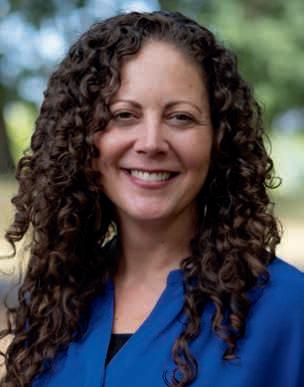
Q: My heating system is 10-plus years old, and I want to switch to a heat pump. Can you help me choose the best option for my home?
A: Heat pumps have been around for decades, and in that time, the technology has come a long way. In my opinion, they could use a rebrand.
The name heat pump does not highlight the benefit of air conditioning that comes with the technology. Heat pumps are highly efficient because they don’t use energy to create heat. Instead, they use energy to move heat – into the home in the winter and out of it in the summer. They typically produce about three times more energy than they use.
The most common types of heat pumps are air source and ground source. Air source heat pumps transfer heat from the outside air, even if it isn’t particularly warm outside. Ground source, or geothermal heat pumps, transfer heat between your home and the ground. With a lower upfront price tag, air source heat pumps are more common.
According to the U.S. Department of Energy, air source heat pumps can reduce heating use by about 65% compared to an electric furnace. They come in a variety of styles and configurations to fit different homes. Air source heat pump technology has been popular in warmer climates for decades. There are now cold climate versions available, too.
Here’s an explanation of how each type operates:
Ducted air source heat pumps are ideal for homes with existing ductwork or homes where ductwork can be feasibly added. Replacing an aging central air conditioning system with a heat pump can significantly reduce heating costs.
Ductless heat pumps , or mini-split heat pumps, also draw heat from the outside air. They are a great solution for homes that do not have existing ductwork.
There are many configurations to suit
different home layouts. New options on the market allow for coupling with gas or propane backup heat, which might be a good fit for your home. Ductless heat pumps can be a great option for homes with wood stoves. This can help home air quality, heat the home without gathering wood and provide air conditioning in warmer months.
Geothermal heat pumps transfer heat from the ground to your home. They are even more efficient than air source heat pumps, reducing energy use by 70% to 80%, according to the U.S. Department of Energy. They can also heat water for use in the home, which saves on water heating costs.
From a user experience perspective, heat pumps are a little different because the heat from the register doesn’t feel quite as warm as oil, electric, natural gas or propane heat. That can take a little getting used to, but the efficiency gains and energy savings make the investment worthwhile.
Before buying a heat pump, compare equipment ratings. The higher the rating, the more efficient the equipment. If it is time to replace your heating system, I recommend making the switch to a heat pump to conserve energy and potentially save on your electric bills.
Most heat pump systems are installed with a backup or auxiliary heat for cold weather. This auxiliary heat can be electric coils, gas, propane or oil, which is usually more expensive to operate. This helps keep your home warm on cold days, but you don’t want to use it if you don’t need it.
For some heat pumps, turning up the thermostat too quickly or too high can trigger the backup heat. Typically, your thermostat will display emergency or auxiliary heat when using this feature. Speak to your HVAC technician to ensure your thermostat is set to maximize efficiency.
Tara Miller
Central Electric Cooperative, Manager of Communications
The year was 1950, and a teenager named Robert Moe was living on a farm in northern Hanson County when Intercounty Electric brought power to the prairie. His parents, Chester and Myrl, had three boys and three girls. Robert was the second youngest of the Moe children.
When farms started receiving power, welding manufacturers held demonstrations to sell their products to area farmers. So, Robert’s dad and his brother, Roy, purchased a 220-volt Forney brand welder.
“Intercounty Electric started small group welding classes in each county. Hanson County’s classes were held at an implement dealer in Alexandria,” Robert said.
After several weeks of classes, Intercounty Electric organized a contest in each county to pick the best welder, and Robert emerged as the winner in Hanson County. His skills were further recognized in a four-county contest held at the Intercounty Electric office building, where he was again named the winner.
Robert presented the first-ever 4-H welding demonstration at the South Dakota State Fair.
“Because my welding demonstration required a special electrical connection, Intercounty Electric installed an electric plug on a pole in the middle of an empty lot on the state fairgrounds.”
Robert fabricated livestock gates and other farm necessities. In 1953, he also made a metal grille guard for the family’s 1952 International pickup. His welding demonstrations would earn him a trip to Chicago to attend the 4-H Club Congress in the electrical division.
At age 21, Robert joined the United States Army and served for two years before returning home to farm. He eventually met his future wife, Norma Northrup, who grew up on a farm served by Intercounty Electric east of Letcher on Highway 37.
Robert and Norma grew crops and raised cattle on the Moe homestead for more than 25 years. They spent 32 winter seasons in south Texas and traveled around in an RV in the summer for 18 years before eventually moving to Mitchell.
Robert remembers, “Having a yard light was a handy new luxury when we first got electricity, but it got even better later when Intercounty offered a free all-night light if wired through the meter.”
Norma said, “It’s amazing to look at all that’s changed with electric appliances. Refrigerators, deep freezers, water heaters, and washing machines.”
However, Norma explained, one of the more profound impacts of electricity was how it would shape their children’s lives. Their two sons, Kevin and Keith, both have successful careers related to computer technology, a field that would not exist without electricity.
Intercounty Electric merged with Tri-County Electric in 2000 to form Central Electric Cooperative, which today serves mostly rural portions of Aurora, Brule, Buffalo, Davison, Hanson, Jerauld, Miner and Sanborn Counties.
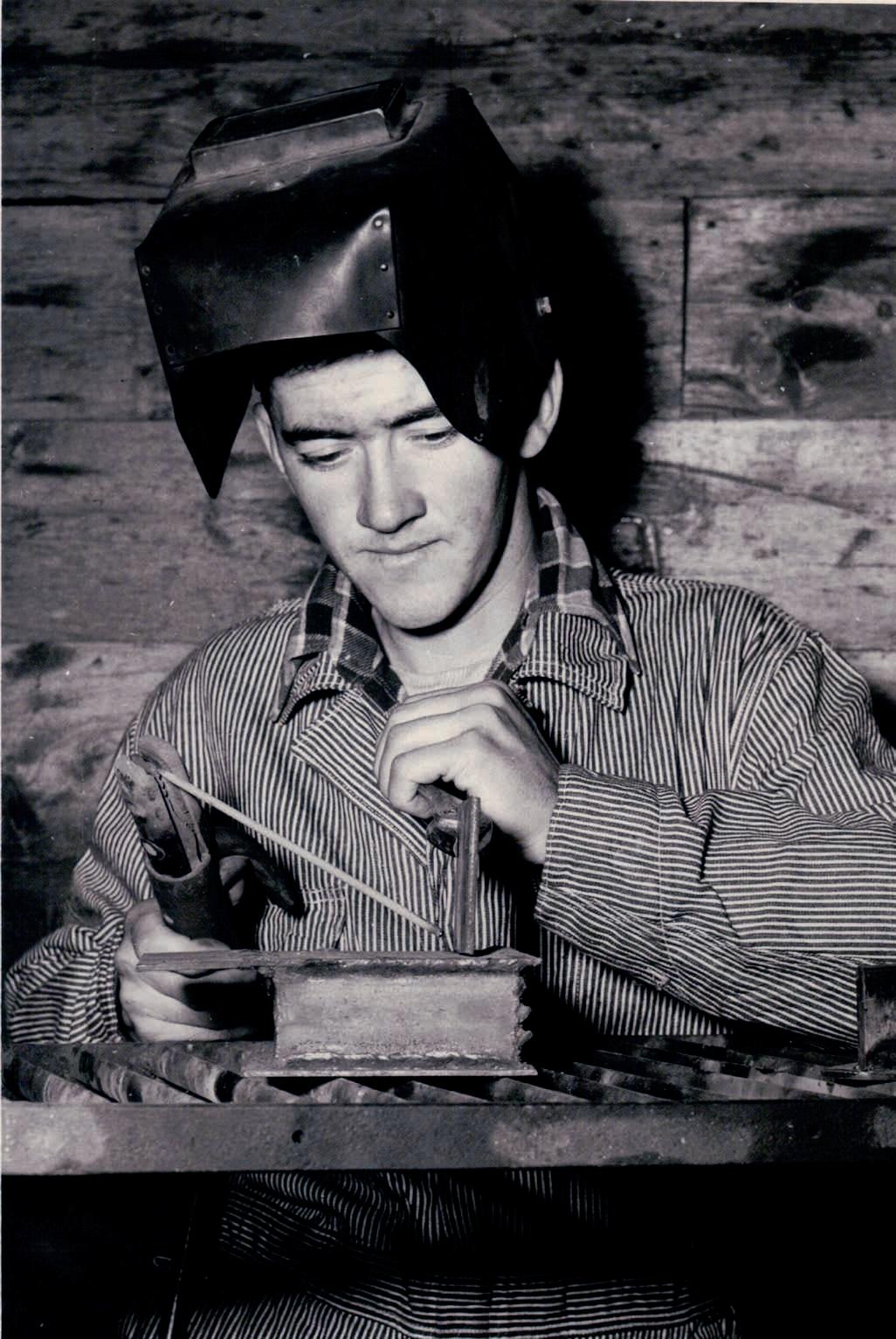
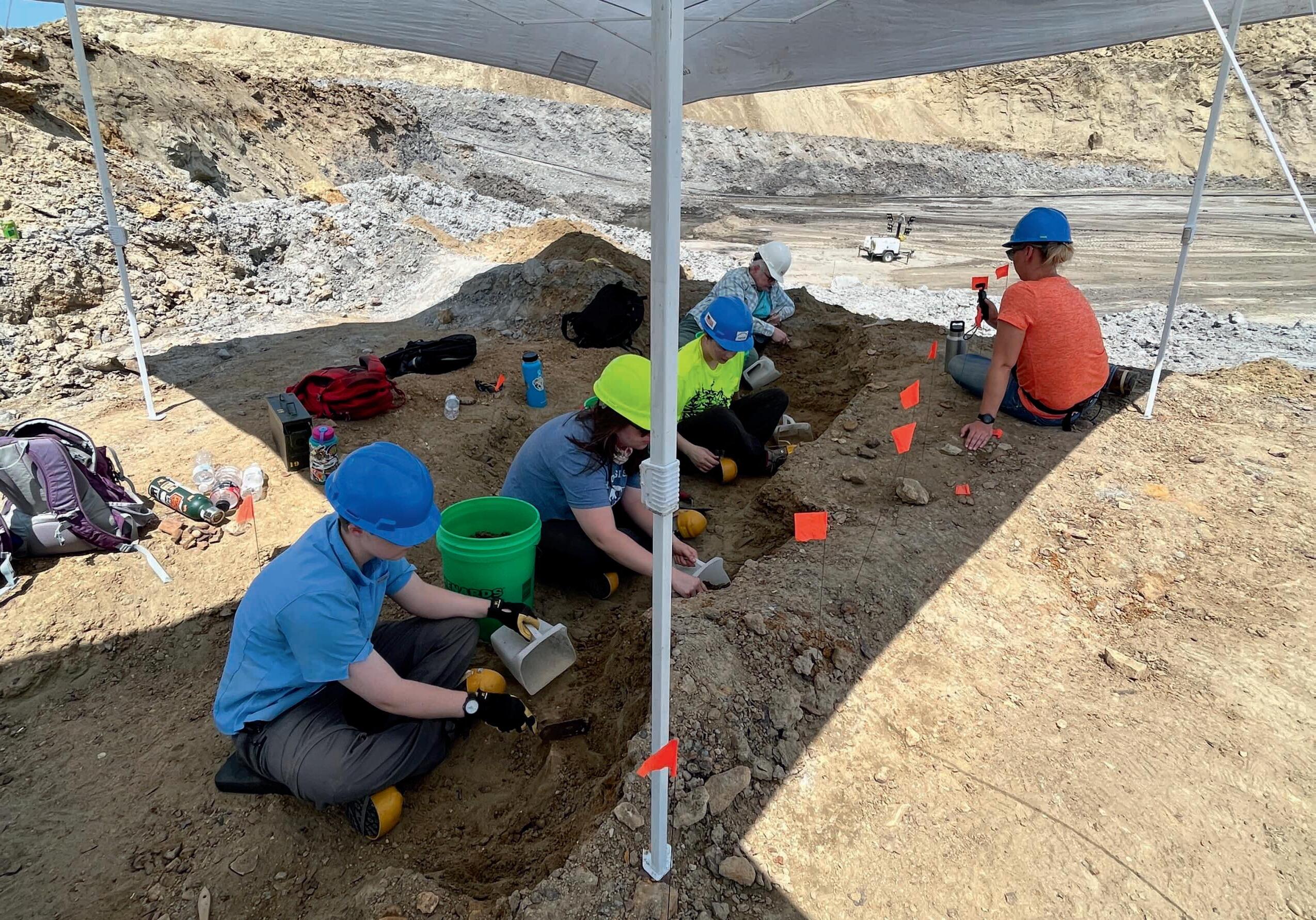
Shannon Marvel shannon.marvel@sdrea.coop
Over Memorial Day of 2023, a coal miner made a historic discovery at the Freedom Mine in North Dakota.
“The shovel operator just happened to take a scoop that had a complete mammoth tusk,” said Jeff Person, a paleontologist with the North Dakota Geological Survey.
“The tusk was about seven-foot-long. That shovel must’ve picked it up just perfectly to not damage or break it. The driver reported the find to his superiors at the Freedom Mine, who then contacted us,” Person said.
The tusk was found in an old streambed. Other fossils

were found in the streambed, including “more than twenty bones from the skeleton, including ribs, a shoulder blade a tooth and parts of the hips,” according to a news release.
“Most of the mammoth fossils known from North Dakota are isolated bones and teeth,” stated Clint Boyd, Senior Paleontologist for the North Dakota Geological Survey, in the news release. “This specimen is one of the most complete mammoth skeletons discovered in North Dakota, making it an exciting and scientifically important discovery.”
The bones were sent off to the Paleontology Lab at the North Dakota Heritage Center and State Museum in Bismarck to undergo extensive cleaning before being prepped to be dried out, which requires that the bones be
wrapped in plastic.
It could take up to another year for the bones to be dried out enough to be taken out of the plastic wrap, Person said.
At that point, the bones will be the focus of scientific research, he said.
According to the news release, “mammoths lived in North Dakota during the Pleistocene Epoch, commonly called the Ice Age, and went extinct in this area around 10,000 years ago. Several species of mammoth lived in North America, including the Woolly Mammoth and the Columbian Mammoth. They lived alongside other iconic animals like saber-toothed tigers and giant sloths. Once the bones are fully cleaned, paleontologists will be able to identify which species was collected from the mine.”
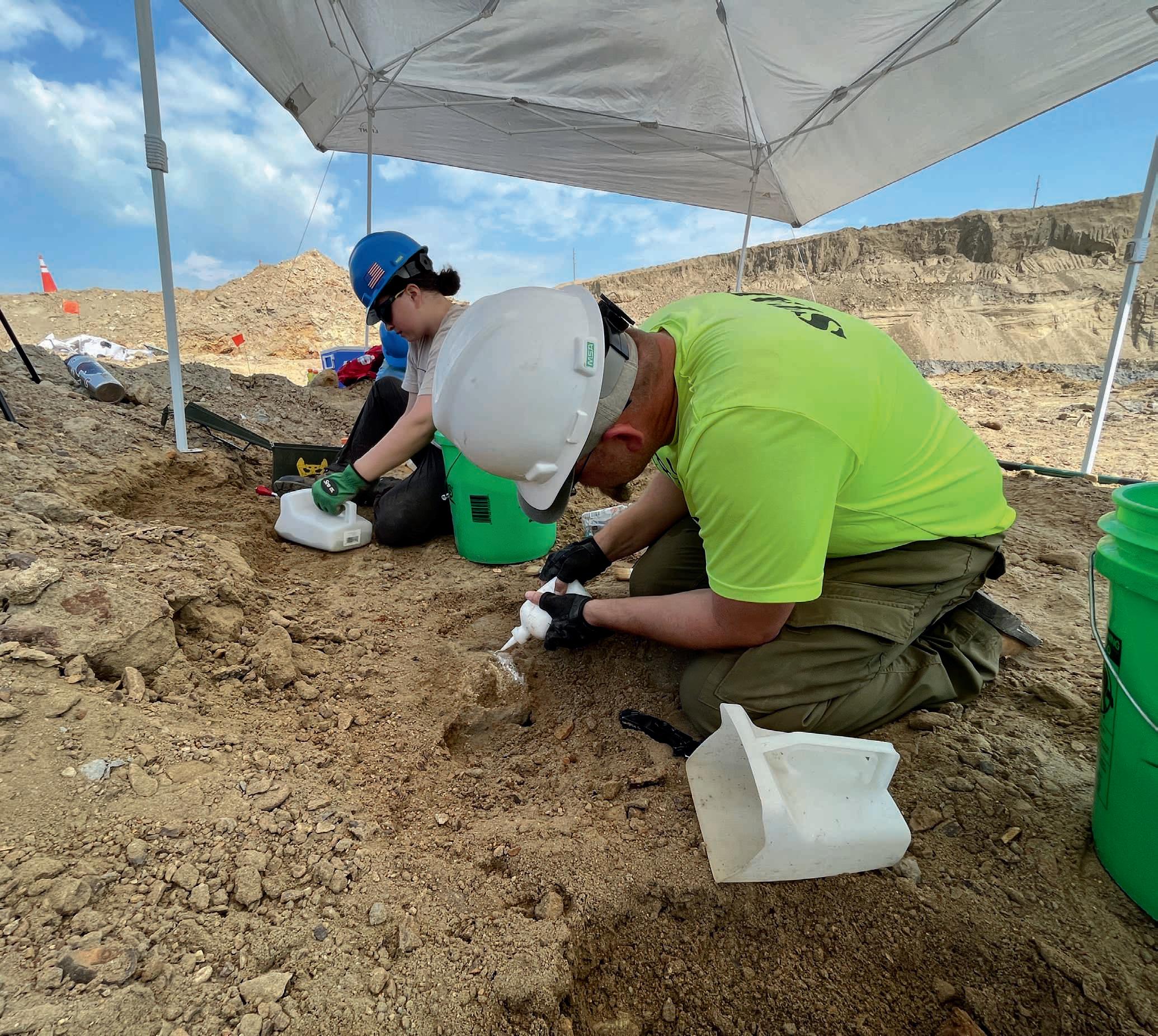
Frank Turner frank.turner@sdrea.coop
What’s a former CEO of East River Power Cooperative to do after they retire? For Tom Boyko, retirement after 37 years in the electric industry and serving nine years as East River’s chief executive officer meant an opportunity to embark on a well-earned canoe odyssey from the headwaters of the Missouri River in Three Forks, Mont., to St. Louis, Mo., with his son, Jacob Boyko, who accompanied his father for a portion of the journey.
According to Boyko, the 2,400-mile trip had been brewing in his mind for a long time, so when he retired at the end of August 2023, he wasted no time planning and executing his adventure, jumping from his cozy office chair to his canoe in just six months.
“I grew up on the Missouri in Stanton, N.D., so I’ve been wanting to do this trip forever,” said Boyko. “It’s just something I’ve always wanted to do.”
Boyko continued, “At first, my family didn’t think I would follow through. But through the winter, I built a tank so I could sit and practice paddling, day after day. Then they realized I was going to do it. My wife and daughter actually drove Jacob and I out to Montana. They weren’t sure I was going to make it all the way, and they thought we might call it quits, but we didn’t.”
Having read the journals of Lewis and Clark, Boyko wanted to follow in the pioneering duo’s footsteps along the Missouri River. However, instead of relying on the historic travelers’ accommodations, Boyko took a more modern approach to his journey with modern provisions, including a canoe packed to the brim with packets of chicken and tuna, boxes of mac and cheese, a valuable cache of instant coffee, a tent, two propane stoves, and many other supplies.
“I got ahold of David Miller’s book, The Complete Paddler, and he really went through, step-by-step, what he experienced when he went down the Missouri River,” said Boyko. “He logged the locations of the campgrounds and included a lot of great information, so it was a great book to have with.”
Armed with the knowledge to navigate hordes of flies and mosquitos, unpredictable summer storms, and the channels of the Missouri River, Boyko launched his expedition on May 16 with his son, who had just graduated college with a degree in Journalism from South Dakota State University. Jacob had also just won a Pulitzer fellowship for a writing project about the Matanza Riachuelo River in Buenos Aires, Argentina. As a result, Jacob left the Missouri River expedition in Williston, N.D., to explore his own
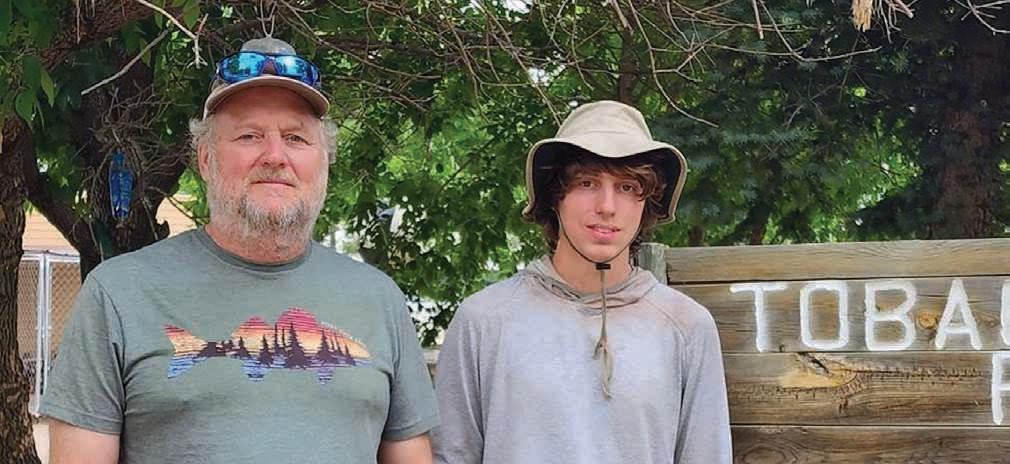
river-centric journey in Argentina. The rest of the trip, Tom tackled solo.
“When you get to be a dad like me, you just so appreciate the opportunity to do something like this with your son,” said Boyko. “He enjoyed it, and he plans to finish the trip at some point in his life. And the cool thing is that every guy my age I met on the trip said the same thing, ‘I wish I could have done that with my son.’ I was very fortunate, and I very much appreciate that he came with me.”
Although Boyko tackled most of the trip by himself, he did have help along the way. Boyko received help from family, friends, and co-workers from the co-op industry when portaging his canoe over the many dams along the way.
“My brother portaged me around Garrison Dam,” said Boyko. “Jordan Lamb, the general manager of Oahe Electric, helped me portage Oahe Dam. Russell Gall with Charles-Mix Electric and Ervin Fink, a former director of East River, helped me through Fort Randall. Stephanie Horst with Bon Homme Yankton paddled Lewis and Clark Lake with me. Even my family came down and to help me portage Gavin’s Point. It was great to see friends and family along the way.”
Even bolstered by the help of friends, the trip wasn’t always smooth sailing. Over the course of his 98-day journey, Boyko traversed strong winds and high waves on Lake Oahe, which forced him to ground his canoe and camp along the beaches of the reservoir. He drifted through oppressive 114-degree heat in Missouri and navigated past large barge traffic. There was even a rowdy raccoon who helped himself to some mac and cheese – all part of the adventure.
“I started packing the canoe when it became evident that a raccoon had been in my canoe during the night and ate through one of my food dry bags leaving mac and cheese noodles and orange cheese throughout the boat,” wrote Boyko in his travel journal. “What a mess.”
But it wasn’t all bad. Boyko said he met some great people and found some real gems along the way.
“I worked for the Western Area Power Association for many years, so I was very familiar with the river and the dams… but when you are actually canoeing it, you get a different appreciation,” said Boyko. “It’s a beautiful river.”
As a cooperative, one of Bon Homme Yankton Electric’s seven cooperative principles is Democratic Member Control.
This principle states, “Cooperatives are democratic organizations controlled by their members, who actively participate in setting policies and making decisions.”
Be an active participant in your cooperative by attending Bon Homme Yankton Electric’s annual members meeting on August 20th from 5:30 to 7:30 PM in Tabor.
For attending, each membership will receive an attendance gift and a $20 meal certificate to your choice of The Keg in Tabor, Joe’s Substation in Lesterville or The Marina Grill in Yankton. All registered members will also be entered for a chance to win one of five $100 bill credits. Follow our Facebook page @ facebook.com/BonHommeYanktonElectric before the Annual Meeting and watch the Call to Order, Adjournment of Meeting and the Bill Credit Drawing LIVE.
Find more information on the annual meeting including the agenda and more in our Annual Report that is included as an insert in this publication.
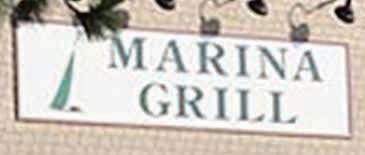

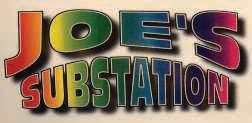










REMINDER: If traffic is backed up to Hwy 50 please take another exit, East and West Dakota are entries to Drive-Thru meeting as well.




Frank Turner frank.turner@sdrea.coop
Three generations ago, the Adee family learned that a tumultuous time can lead to significant opportunity. During the 1930s, the Great Depression wreaked havoc on small rural communities and the agricultural industry. The value of crops and livestock plummeted, and the land became arid.
These hard times impacted many in the Midwest, including Vernon Adee, a rural teacher and rancher in Nebraska. Vernon needed a new way to provide for his family, and a letter from his brother held the answer: “I can’t sell chickens or hogs, but I’m doing well with honey. Be advised: Get a beehive.”
Following his brother’s advice, Vernon attended a foreclosure auction and purchased his first beehive. The decision to begin
beekeeping would inspire several more generations of the Adee family to continue in the trade.
Wanting to start their own operation, Vernon’s sons, Richard and Stanley, purchased a retiring beekeeper’s business through a trade magazine advertisement in 1957. Located in Bruce, South Dakota, the business included 1,500 hives and a breeding yard in Woodville, Mississippi. The acquisition marked the beginning of Adee Honey Farms, and what began as a small family farm quickly grew into the largest beekeeping operation in the country. Today, Adee Honey Farms supports more than 80,000 colonies and nearly 70 full-time employees.
“It started with survival and eventually became a family business,” said Bret Adee, Vernon’s grandson and the owneroperator of Adee Honey Farms. “I can remember being four or five years old and being in the field with my dad, holding the smoker and helping where I could. By the time I was in elementary school, I was loading trucks and moving boxes in the warehouse. Like anyone who grew up on a farm, I was involved in the family business by the time I could walk.”
From a young age, Bret has held a deep love and appreciation for the honey bee. The insect’s ability to cooperate and produce golden treasure while benefiting plants, crops, and the ecosystem at large makes them a unique livestock, unlike any other.
“To watch a hive grow and forage, and by the end of the summer make up to 150 pounds of honey – it’s just so exciting,”
said Bret. “It’s the dynamics of the biology that keeps it interesting.”
Right now, Adee Honey Farms is engaged in honey production in the Midwest, with their bees spread across South Dakota and the west edge of Minnesota and the south edge of North Dakota. Around the first week of August, Bret’s business will start the honey harvest, an event that can last until the first frost or even longer. For now, Bret said this year is shaping up to be a good season for honey production.
“It’s early, but I’m optimistic. The years when there is a lot of clover are the years that beekeepers do well,” said Bret. “We had a wet enough fall that enough clover germinated. We can always lose that to a hot dry wind… but we are optimistic right now.”
But bees aren’t just used to make honey; they also have hand in pollinating crops across the country. More than a neat fact, it’s also the second half of the beekeeping industry. The mere presence of honey bees can increase yields for crops such as alfalfa and sunflowers by up to 20 to 30 percent, depending on the variety of crop. According to the U.S. Department of Agriculture, pollination is responsible for more than $18 billion in added revenue to crop production in the country.
Once the honey harvest is over, the bees will be loaded onto a truck to tour the country, traveling from the Dakotas to California and later to Texas in search of favorable weather and crops to pollinate. In fact, crop yields from California almond trees and apple trees are almost totally dependent on pollination from bees, enticing farmers from across the country to welcome
bees onto their land. Everyone benefits – even bees.
“It’s a win for the consumer who gets to eat the honey. It’s a win for the landowner who has the bees on his land, and if everything goes right, it’s good for the beekeeper’s family too,” said Bret.
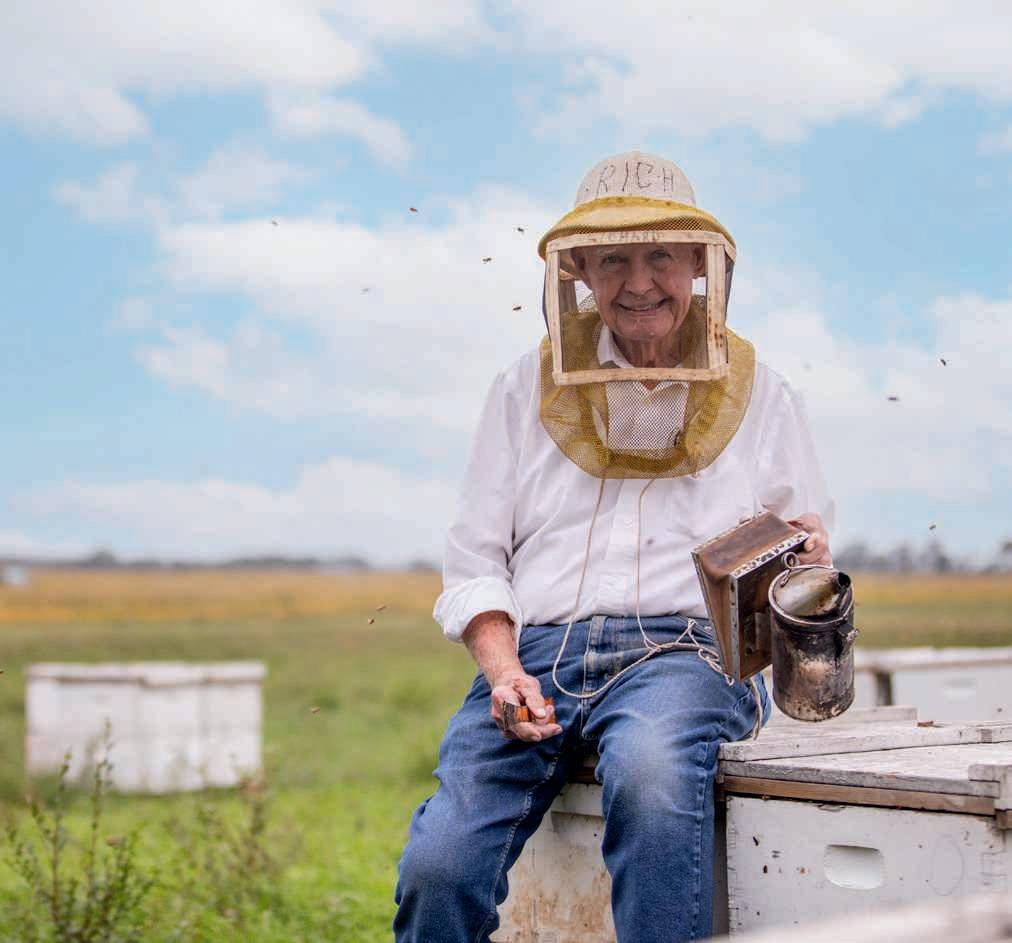
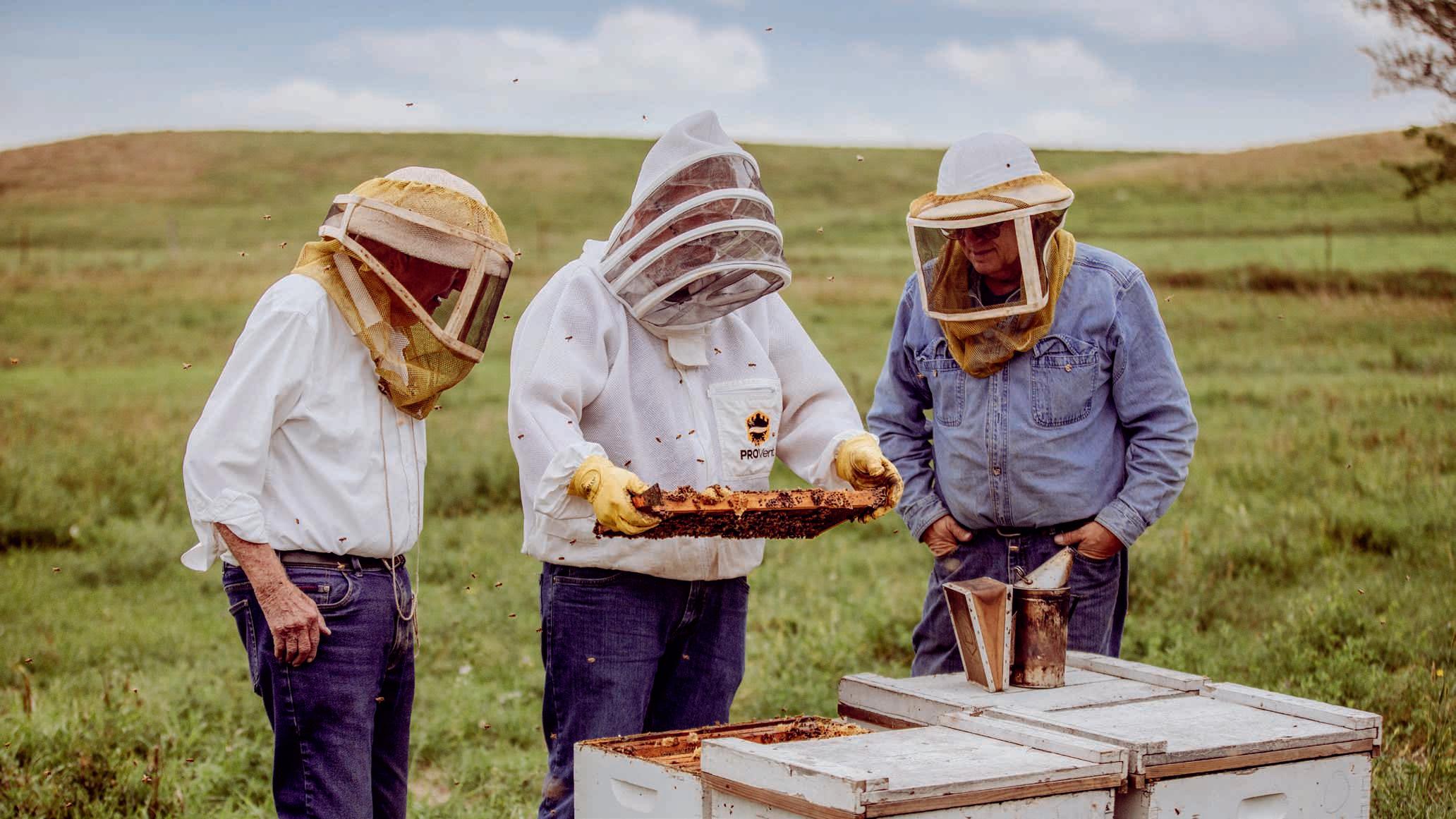
At the day camp B-Y Electric used interactive displays to teach children how to be safe around electricity and electrical equipment. Specifically focusing on teaching kids how to be safe on the farm when encountering down power lines, underground wires, and emergency procedures should something happen.
We take pride in our commitment to safety. Please contact our office at (605) 463-2507 if you would like to arrange a safety demonstration.

Jennifer Gross East River Education & Member Service and Aaron Melichar Bon Homme Yankton Electric Member Service Advisor attending Yankton County Farm Safety Day demonstrating the dangers of electrical wires using the Powertown display.
Thirty-six students representing 18 South Dakota electric cooperatives headed to the Washington, D.C., area June 15-21 for the 2024 Rural Electric Youth Tour.
The program, which can trace its existence back to a 1957 speech by Lyndon B. Johnson where he encouraged electric cooperatives to send youth to the nation’s capital so they “can actually see what the flag stands for and represents,” encourages teens to engage in their communities and learn about the importance of political involvement. More than 1,300 teens have represented the Rushmore State since South Dakota sent its first group in 1963.
The 2024 group visited many of the historic sites the region offers, including Fort McHenry in Baltimore. The fort’s bombardment in the War of 1812 was captured in Francis Scott Key’s poem, which would eventually become the national anthem. Old Glory would play a recurring theme in the trip as students could see it at the Smithsonian’s National Museum of American History and also hear an inspirational message centered on the flag from Youth Day keynote speaker Mike Schlappi, a four-time Paralympic medalist in U.S.A. men’s wheelchair basketball.
Students also met with the state’s congressional delegation with a short meet and greet with U.S. Sen. John Thune and U.S. Sen Mike Rounds. Also while in D.C. Youth Tour participants from across the country toured many of our nation’s historical sites – including the National Archives, Library of Congress, Mount Vernon, U.S. Supreme Court, and many more.
Addison Hovorka represented Bon Homme Yankton Electric as a 2024 South Dakota Youth Tour Delegate.
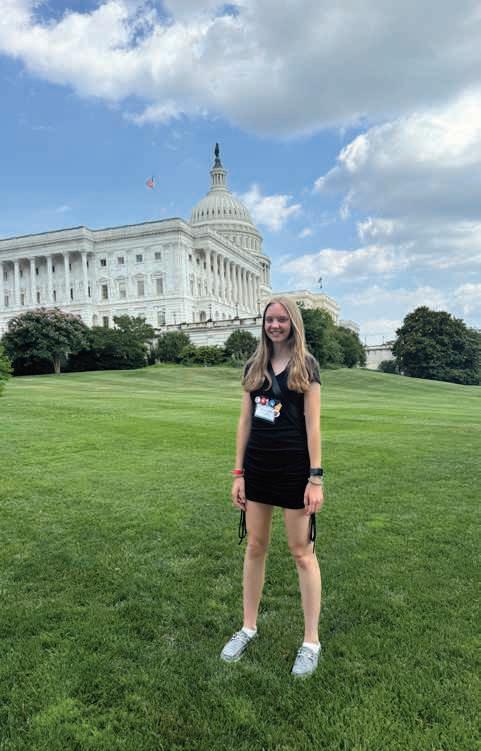

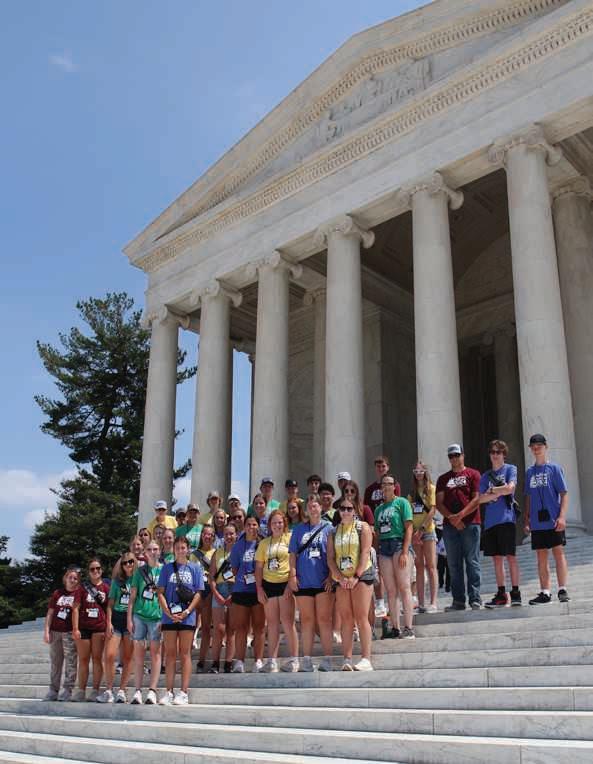
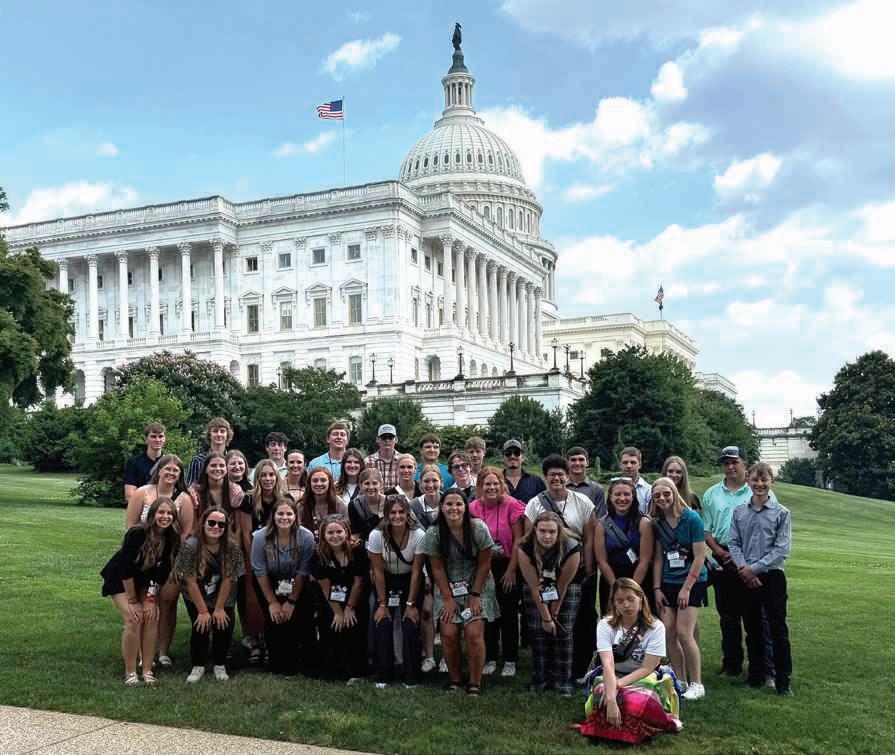
Bon Homme Yankton Electric was excited for the 2024 Czech Days festivities. This year we wanted to illustrate the importance of electrical safety with several current staff members representing B-Y Electric’s commitment to always keep safety a top priority!
The large parade through Tabor was held on June 15th.
Be sure to mark your calendars for another great Czech Days June 20th and 21st, 2025.

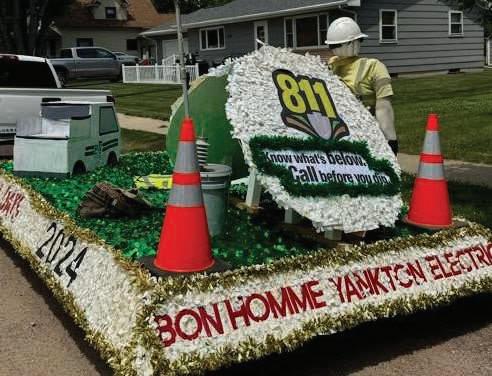

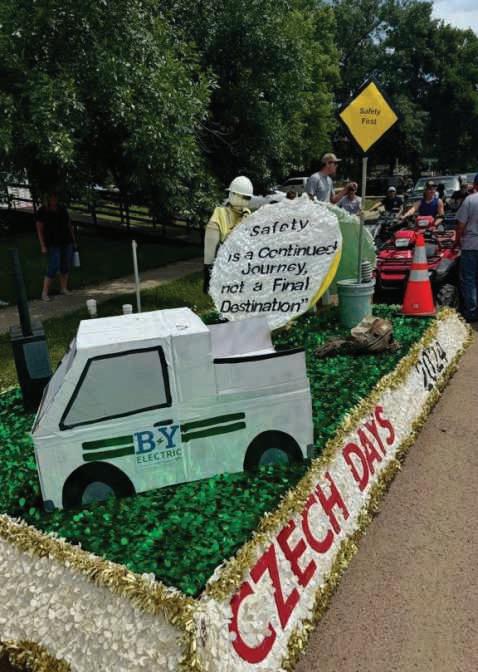

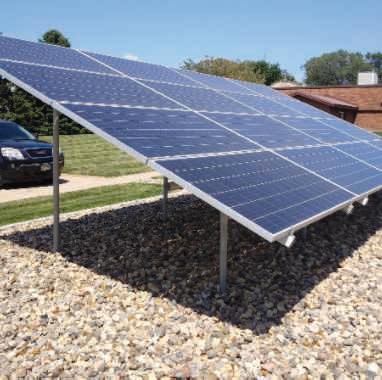
Bring this coupon and mailing label to the Touchstone Energy® Cooperatives booth at Dakotafest or the South Dakota State Fair to win a prize!
Your Phone Number:
Your E-mail Address:

AUG. 2-4
Arlington Days Arlington, SD
605-690-5717
Follow Arlington Days, South Dakota on Facebook & Instagram
To have your event listed on this page, send complete information, including date, event, place and contact to your local electric cooperative. Include your name, address and daytime telephone number. Information must be submitted at least eight weeks prior to your event. Please call ahead to confirm date, time and location of event.
AUG. 3
Prairie Fest Armour, SD
AUG. 3
Bloomin’ Quilt Party 12-5 p.m. Bennett Barn Aurora, SD 605-690-3246
AUG. 3
Car-Truck Show & Shine Union County Fair Alcester, SD oldblue52@gmail.com
AUG. 2-11
Sturgis Motorcycle Rally Sturgis, SD www.sturgismotorcyclerally.com
AUG. 7
Ag Appreciation Day W.H. Lyon Fairgrounds Sioux Falls, SD
AUG. 10
Perseid Meteor Shower Palisades State Park Garretson, SD
AUG. 10
Camaro Fun Days 10 a.m.-2:30 p.m. Pioneer Park Brookings, SD
AUG. 10-11
Fur Trader Days Geddes, SD 605-680-2160
AUG. 17
6th Annual Black Hills Super 6 Mountain Bike Race 3 hour race, 10 a.m. 6 hour race, 8 a.m. Northern Hills Area CASA Spearfish, SD
Aug. 17
Yankton Extreme Bull Riding Tour 7 p.m. Yankton, SD 605-760-2153
AUG. 18
Arlington Car Show Arlington, SD 605-203-0728
AUG. 20-22
Dakotafest Mitchell, SD
AUG. 22
61st Annual Steam Threshing Jamboree Prairie Village Madison, SD
AUG. 28 - SEPT. 2
South Dakota State Fair 7 a.m. - 8 p.m. State Fairgrounds Huron, SD www.SDStateFair.com
SEPT. 8
Homesteader Day 1-4 p.m. Beaver Creek Nature Area Valley Springs, SD
SEPT. 14-15
2024 Kuchen & Harvest Festival Delmont, SD
SEPT. 17
EV Expo
W.H. Lyon Fairgrounds Sioux Falls, SD
Note: Please make sure to call ahead to verify the event is still being held.